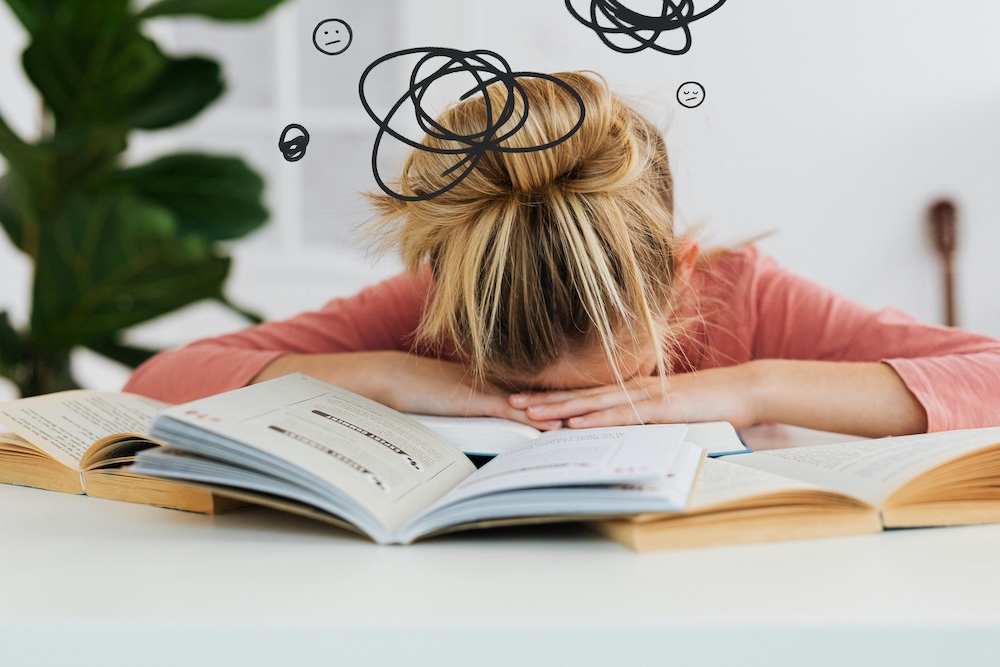Anxiety is one of the most common challenges students face, affecting their ability to focus, participate, and thrive in the classroom. Whether it’s test anxiety, social worries, or academic pressures, understanding how to help students with anxiety is essential for educators. By providing the right support, teachers can create a classroom environment that helps students feel safe, empowered, and capable of managing their stress.
This article explores the causes of anxiety in students, the impact of anxiety in the classroom, and practical interventions for students with anxiety that teachers can implement to support their emotional well-being.
Understanding Anxiety in Students
Anxiety in students can manifest in many ways, from physical symptoms like stomachaches to avoidance behaviors such as refusing to participate in class discussions. While occasional nervousness is a natural part of growing up, persistent anxiety can interfere with a child’s ability to learn and engage with their peers.
How Anxiety Affects School Performance
Students with anxiety may struggle with:
✔ Concentration and Memory: Stress can make it difficult to focus on lessons and retain information.
✔ Participation and Engagement: Fear of making mistakes or speaking up in class can lead to avoidance.
✔ Social Interactions: Anxiety can make forming friendships or working in groups overwhelming.
✔ Test Performance: Performance anxiety can cause students to freeze or struggle to demonstrate their knowledge under pressure.
Recognizing these challenges allows teachers to provide helpful resources for students with anxiety and create a supportive learning environment.
Common Causes of Anxiety in Students
Understanding the causes of anxiety in students helps educators anticipate triggers and provide meaningful support. Some of the most common causes include:
- Academic Pressure: High expectations and fear of failure can make students anxious about tests, homework, and class participation.
- Social Anxiety: Worries about fitting in, making friends, or speaking in front of others can be overwhelming.
- Change or Uncertainty: Transitions such as moving to a new school, changing teachers, or adjusting to new routines can cause stress.
- Sensory Overload: Noisy, busy environments can be difficult for students with sensory sensitivities.
- Perfectionism: Some students set extremely high standards for themselves, leading to frustration when they don’t meet their own expectations.
By identifying specific stressors, teachers can implement interventions for students with anxiety that address individual needs.
How Teachers Can Help Students with Anxiety

Educators play a critical role in supporting students with anxiety by fostering a calm, inclusive, and predictable environment. Below are key strategies to help anxious students feel more at ease.
1. Create a Safe and Supportive Classroom Environment
A welcoming classroom helps reduce anxiety in the classroom by making students feel secure and valued. Strategies include:
✔ Consistent Routines: Predictability can ease stress, so establish clear schedules and expectations.
✔ Flexible Seating Options: Let students choose quiet spaces when they need a break.
✔ Encouraging Words: Offer reassurance and positive reinforcement, even for small achievements.
2. Teach Mindfulness and Relaxation Techniques
Mindfulness helps students regulate emotions and manage stress. Simple techniques include:
✔ Deep Breathing Exercises: Teach students to take slow, deep breaths when they feel anxious.
✔ The Empty Balloon Exercise: The Empty Balloon guides students through mindful breathing, helping them calm down in moments of stress.
✔ Grounding Activities: Encourage students to focus on their senses (what they see, hear, and feel) to stay present in the moment.
3. Provide Emotional Support and Validation
Students with anxiety need to feel heard and understood. Teachers can:
✔ Check In Regularly: A quick “How are you feeling today?” can help students open up.
✔ Normalize Anxiety: Let students know that it’s okay to feel nervous and that they are not alone.
✔ Offer a Calm-Down Space: Create a designated area where students can take a break when needed.
4. Encourage Positive Self-Talk and Growth Mindset
Help students reframe anxious thoughts with encouraging messages:
🔹 Instead of: “I’ll never get this right.” → Say: “I’m still learning, and I’ll get better with practice.”
🔹 Instead of: “Everyone will laugh if I make a mistake.” → Say: “Everyone makes mistakes. That’s how we learn.”
5. Offer Flexible Participation Options
Some students may feel overwhelmed speaking in front of the class or participating in group activities. Support them by:
✔ Allowing written responses instead of verbal answers.
✔ Pairing them with a trusted friend for partner work.
✔ Giving them the option to present privately or in small groups.
6. Promote Social-Emotional Learning (SEL) Strategies
SEL helps students build confidence, emotional regulation, and resilience. The Tools of the Heart curriculum provides structured lessons that teach students how to recognize, process, and manage emotions effectively.
Interventions for Students with Anxiety

1. Sensory Breaks in the Classroom
Short sensory breaks can help students reset and manage their emotions. These include:
✔ Stretching or movement breaks to release built-up tension.
✔ Fidget tools for students who need to channel nervous energy.
✔ Listening to calming music during quiet work times.
2. Journaling and Expressive Writing
Encourage students to write about their feelings in a journal. Writing helps students:
✔ Process emotions in a safe and private way.
✔ Identify patterns in their anxiety triggers.
✔ Reflect on positive moments and growth.
3. Teaching Emotional Vocabulary
Many students struggle to articulate their emotions. Teach them phrases like:
✔ “I feel nervous because…”
✔ “I need help with…”
✔ “When I get anxious, it helps me to…”
The more students can express their emotions, the easier it is to find solutions.
4. Peer Support and Classroom Community
Encourage peer support by:
✔ Practicing kindness and empathy in classroom discussions.
✔ Using buddy systems to help students feel included.
✔ Reinforcing the idea that classmates should support, not judge, each other.
Resources for Students with Anxiety
Helping students with anxiety requires ongoing support and accessible resources. Teachers can integrate structured programs like:
- The Empty Balloon: A guided breathing tool that helps students self-regulate.
- Tools of the Heart: A social-emotional learning curriculum that builds confidence and emotional resilience.
- Classroom Relaxation Stations: Create a space with calming tools like stress balls, quiet reading materials, or soft lighting.
- Mindfulness Apps for Kids: Apps like Headspace for Kids or Calm can provide guided relaxation exercises.
By providing these resources for students with anxiety, teachers create a more inclusive and supportive classroom environment.
Supporting Students with Anxiety in the Classroom
Understanding how to help students with anxiety goes beyond academic support—it’s about creating a safe space where students feel heard, valued, and equipped to manage their emotions. By implementing interventions for students with anxiety, offering SEL resources, and building strong teacher-student relationships, educators can help students develop resilience and confidence.
Want to bring structured emotional learning to your classroom? Explore Tools of the Heart for evidence-based strategies to support students with anxiety in meaningful ways.
You May Also Like:


